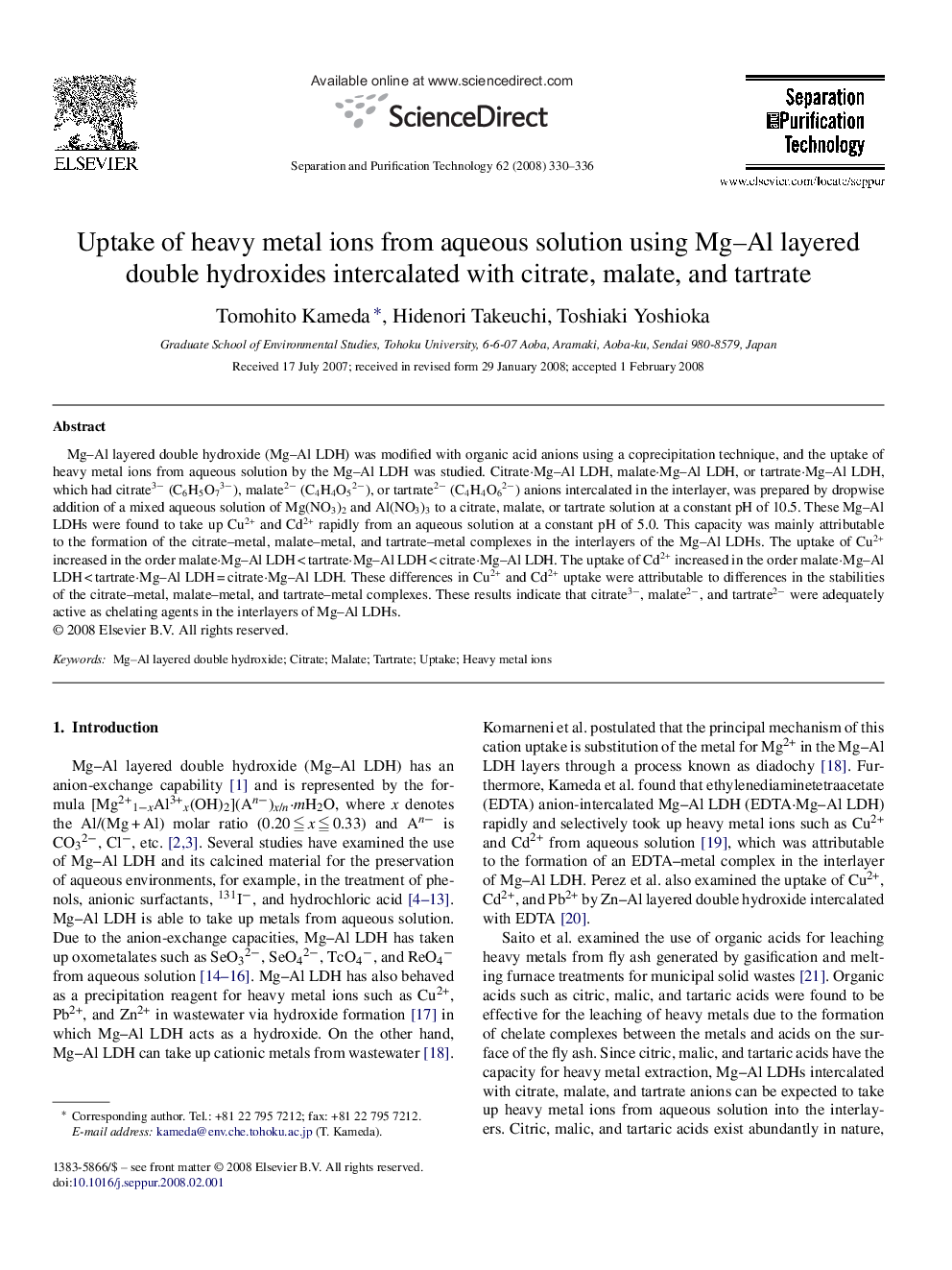| Article ID | Journal | Published Year | Pages | File Type |
|---|---|---|---|---|
| 643162 | Separation and Purification Technology | 2008 | 7 Pages |
Mg–Al layered double hydroxide (Mg–Al LDH) was modified with organic acid anions using a coprecipitation technique, and the uptake of heavy metal ions from aqueous solution by the Mg–Al LDH was studied. Citrate·Mg–Al LDH, malate·Mg–Al LDH, or tartrate·Mg–Al LDH, which had citrate3− (C6H5O73−), malate2− (C4H4O52−), or tartrate2− (C4H4O62−) anions intercalated in the interlayer, was prepared by dropwise addition of a mixed aqueous solution of Mg(NO3)2 and Al(NO3)3 to a citrate, malate, or tartrate solution at a constant pH of 10.5. These Mg–Al LDHs were found to take up Cu2+ and Cd2+ rapidly from an aqueous solution at a constant pH of 5.0. This capacity was mainly attributable to the formation of the citrate–metal, malate–metal, and tartrate–metal complexes in the interlayers of the Mg–Al LDHs. The uptake of Cu2+ increased in the order malate·Mg–Al LDH < tartrate·Mg–Al LDH < citrate·Mg–Al LDH. The uptake of Cd2+ increased in the order malate·Mg–Al LDH < tartrate·Mg–Al LDH = citrate·Mg–Al LDH. These differences in Cu2+ and Cd2+ uptake were attributable to differences in the stabilities of the citrate–metal, malate–metal, and tartrate–metal complexes. These results indicate that citrate3−, malate2−, and tartrate2− were adequately active as chelating agents in the interlayers of Mg–Al LDHs.
